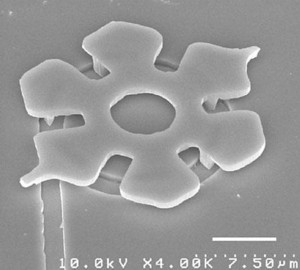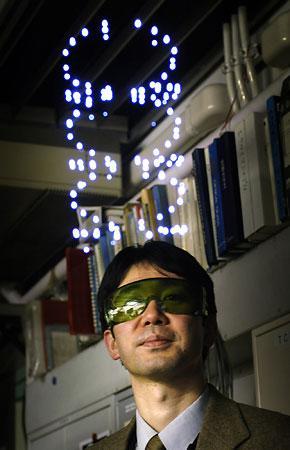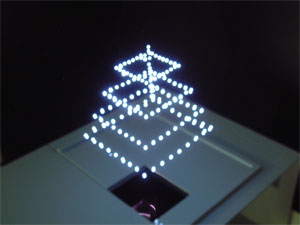
Researchers at Japan's National Institute of Advanced Industrial Science and Technology (AIST) have succeeded in boosting the manual skills of blue-collar droids by developing a robust and dexterous human-sized robotic hand.
AIST's multi-fingered hand, which is designed for use on life-sized humanoid robots, is a significant improvement over previous robot hands, which for the most part have either been too bulky or had fingers that were too weak. Humanoid robot hands in the past have tended to lack versatility and dexterity because they were designed to handle a narrow range of specific tasks or had too much emphasis placed on physical appearance.
AIST's four-fingered hand is about the size of an adult male human hand, measuring 18 cm from wrist to fingertip and 8.4 cm across the palm. Each of the three fingers and thumb are capable of exerting 15 Newtons of fingertip force -- also similar to the human hand. To mimic the movement of human hands, each finger has 4 joints and the thumb has 5 joints.
The hand is equipped with mechanisms that reduce backlash, resulting in smoother finger operation and higher-precision control of fingertip position. In addition, the drive mechanisms provide ample force to the fingertips for a strong grip, and compact sensors in the fingertips ensure the accurate application of force.
With further tests to improve the hand's mechanics and software, AIST aims to develop a human level of dexterity for the hand. This development could mean that with the android population explosion looming on the horizon, we may soon begin to see working class robots equipped with the right hands to take on our menial tasks.
[Source: AIST press release]



 Researchers from Japan's National Institute of Advanced Industrial Science and Technology (
Researchers from Japan's National Institute of Advanced Industrial Science and Technology ( Japan's National Institute of Advanced Industrial Science and Technology (
Japan's National Institute of Advanced Industrial Science and Technology ( At the demonstration, bursts of laser light were emitted 100 times per second to form shapes in the air up to 50 cm above the device. Heat from the laser caused the air to expand, producing a crackling sound that resembled a series of tiny explosions.
At the demonstration, bursts of laser light were emitted 100 times per second to form shapes in the air up to 50 cm above the device. Heat from the laser caused the air to expand, producing a crackling sound that resembled a series of tiny explosions. On January 23, the
On January 23, the